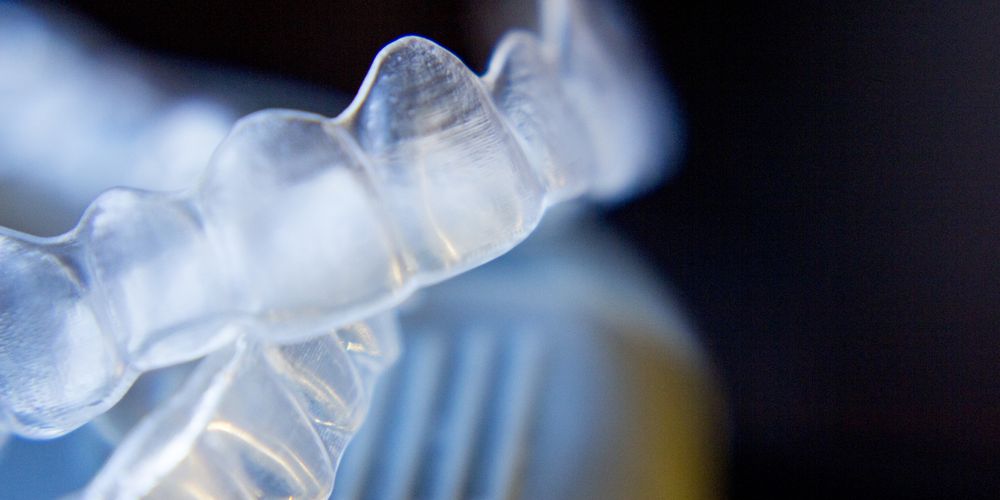What You Need to Know About Invisalign and Bleeding Gums?
-
 Petr Bulanek
Petr Bulanek
- October 5, 2023

So, you’ve hopped on the Invisalign train, hoping for a straighter smile without the clunky metal brackets.
I get it; Invisalign is convenient and far less noticeable than traditional braces.
But wait, what’s that?
Have you noticed some bleeding gums during this dental adventure?
Don’t panic. I’ve got you covered.
Table of Contents
What’s the Deal with Invisalign?
Alright, let’s zero in on Invisalign and explore some of the unique factors that might contribute to your bleeding gums.
While Invisalign is a fantastic innovation in the dental world, it’s not without its peculiarities.
The Plastic Factor
Invisalign aligners are made of a special kind of medical-grade plastic. Generally, they’re quite smooth and designed to minimize irritation.
However, everyone’s mouth is different, and what feels fine to one person might cause another some grief.
The plastic can irritate your gums, making them more susceptible to bleeding, especially if you already have some gum sensitivity.
If you find that the plastic seems to be the problem, talk to your dentist about it. They may be able to make some adjustments or offer advice on reducing sensitivity, like recommending a specific mouthwash or topical treatment.
Cleaning the Aligners
One of the selling points of Invisalign is that you can take the aligners out when you eat or drink anything other than water.
While that’s convenient, it also opens the door for potential problems. Food particles and bacteria can sneak in between the aligner and your teeth.
If you’re not religiously cleaning your aligners, these bacteria can multiply and lead to gum irritation and bleeding.
To avoid this, clean your aligners every time you brush your teeth. Use lukewarm water and a soft toothbrush to gently scrub them.
Some people also use a denture cleaner or a specialized Invisalign cleaning solution for deeper cleaning. Just remember to avoid hot water, as it can warp the plastic.
Edge Troubles
Let’s talk about the edges of your aligners.
Ideally, these should be smooth and well-fitted to your gum line. However, sometimes you might get a set where the edges are a bit sharper or not as well-finished as they should be. This can cause them to dig into your gums, leading to bleeding.
If you suspect this is happening, don’t try to trim or adjust the aligners yourself. Reach out to your dentist. They can either smooth out the edges for you or order a new set that fits better. It’s all part of getting that perfect smile!
Time to Take Action: What Can You Do?
You’ve noticed the bleeding, you’ve thought about the potential causes, and now you’re ready to take action. Here’s how you can tackle the issue head-on.
Dental Hygiene Overhaul
No matter what the cause of your bleeding gums is, revisiting your dental hygiene is a no-brainer.
I’m talking about a complete overhaul if needed. Start by brushing twice a day for two minutes each time. And don’t forget to floss every day.
Also, consider incorporating an antiseptic mouthwash to help kill bacteria and keep your gums healthy.
If you’re using an electric toothbrush, make sure it’s set to a gentle mode to avoid further irritation.
Aligner Cleaning Routine
If you haven’t been diligent about cleaning your aligners, now’s the time to start. Every time you take them out or put them back in, give them a good rinse.
Make it a routine, like washing your hands before a meal.
Also, remember to keep them in their protective case when they’re not in your mouth to keep them free from external bacteria.
Dental Check-In
Even after making all these adjustments, if the bleeding doesn’t subside, it’s essential to visit your dentist.
Continuous bleeding could be a sign of a more serious issue that needs professional attention.
Your dentist can examine your gums and aligners, perform necessary tests, and may even recommend an X-ray to get to the root of the problem.
Don’t Forget the Pros!
I can offer advice and share my experiences, but when it comes to health issues like bleeding gums, professionals should have the final word.
If you’re experiencing persistent problems, please consult your dentist.
They can provide targeted treatments like specialized mouthwashes, laser treatments, or even a change in your Invisalign treatment plan.
Final Thoughts
Navigating the journey to a perfect smile with Invisalign can come with a few bumps, such as bleeding gums. But with some diligence and proper guidance from your dentist, these are often issues you can resolve quickly.
Remember, both dental hygiene and aligner care play a crucial role in keeping your gums happy. So keep up with your routines, pay attention to any changes, and don’t hesitate to seek professional advice when in doubt.
And there you have it! I hope this extended guide helps you on your path to that dream smile. Take good care of those teeth and gums, and you’ll be smiling brighter in no time!